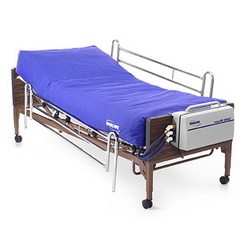Providing the patient a certain degree of command over his own bodily movements is amongst the most important considerations for caregivers. In more severe cases, such as those involving broken bones and major operations, allowing patient movement is hardly possible. To make it worse, doing so may risk disrupting the healing process the patient is going through. On second thought, trapping the patient motionless in bed may invoke the thought of being weak and crippled in the patient's mind, thereby slowing his healing. That said it is important to provide specialized beds with medical bed controls for the patient.

What are medical bed controls?
Medical bed controls are small devices that go with special hospital beds, which allow the patient to reposition the bed's movable parts to make him more comfortable. The controllers allow the patient or the caregiver to adjust the bed's height, adjust the head and the feet of the bed, and adjust the side rails. Medical bed controls make it easy to incline the bed in a position that best suits the patient's needs. For example, instead of rearranging the pillows and having the patient sit up, it's easier for both the caregiver and the patient to simply incline the head of the bed to a slightly slanted position. The incline of the bed can be adjusted according to the patient's preference, too, without having the patient move at all.
In contrast to the patient's need to move his muscles after a long time of confinement in bed, it may be risky to overstretch and force movement. On occasion, the patient will have to reposition himself to watch TV, to eat or to sit up, and talk with visiting friends. In such cases, medical bed controls become quite useful because it spares the patient the risk as well as the inconvenience of repositioning himself. With medical bed controls, he only has to pick up the controller and hit the incline button.
Providing convenience
As mentioned, medical bed controls provide utter convenience to the patient. There are massively complex medical beds that have more uses than simply being beds. The mattresses are lined atop gears and mechanisms that can transform the bed into a chair. As a matter of fact, medical bed controls can do even more. If, for example, the bed itself comes with various parts, like tables and side rails, the patient can use the controller to take those parts out without the help of an attending caregiver.
This is particularly useful because patients sometimes awaken when there is nobody around, and might need provisions. The patient might wake up hungry, or need help to relieve himself but can't go alone to the bathroom. In this case, the medical bed controls also have buttons to call on nurses to quickly respond to the need of the patient.
All in all, medical bed controls are invaluable tools that help not only with providing convenience, but also with allowing quicker recovery to the patient. For caregivers, these are important considerations that must be given thorough attention.
